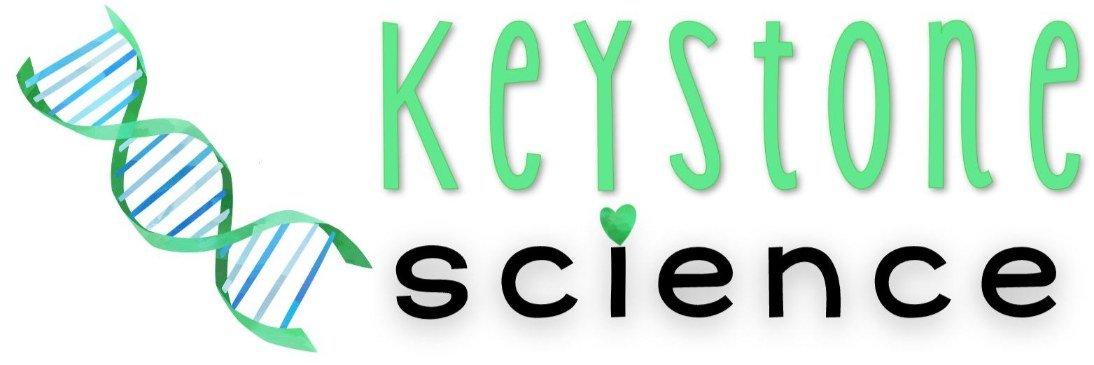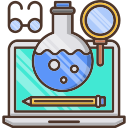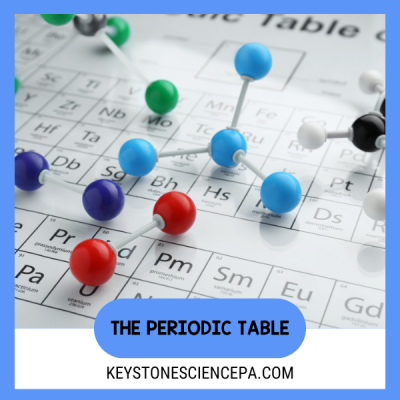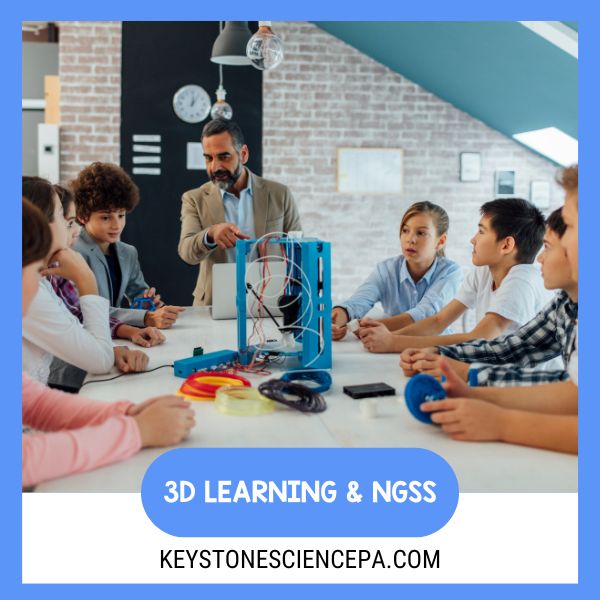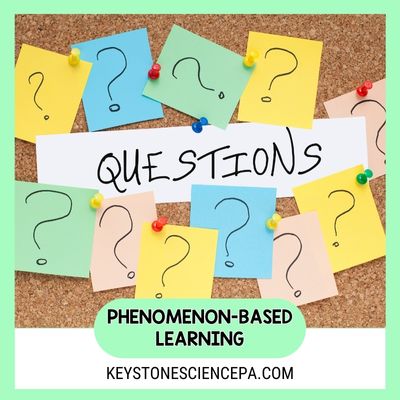In the first or second year in the classroom, I was marking a test where students had to identify elements on the periodic table and then apply their knowledge to a series of questions. In those days I was using a red pen to grade and, whew, there were a lot of red Xs on those test pages.
I sat at my teacher desk and stared out wondering what had happened.
Students had taken the notes.
We had reviewed it in class.
I had done all of the things I thought I should have done. I thought maybe it was just that the students just didn’t study enough. But looking at the sheer number of incorrect answers across so many student papers I knew it couldn’t be that the whole class hadn’t studied. There had to be another reason!
At that moment, as I was staring out at my classroom, my eyes turned to the giant periodic table that hung from one of the walls. There was just so much information on it.
I then thought about how my students had put their heads down and copied the notes as required. But thinking of it now, it was just note-taking, hoping they could memorize it all. Based on the test results, the info obviously hadn’t stuck.
Since the periodic table is fundamental to chemistry, I knew I had to have a different plan to ensure the knowledge really stuck with students!
With that in mind, I devised six teaching strategies that are more hands-on and tend towards a more student-centered, active learning approach that aligns with the NGSS and 3D learning techniques. These strategies make learning the periodic table more engaging, accessible, and, best of all, memorable!
Now students participate in a periodic table scavenger hunt, make their own periodic tables, graph periodic trends activities, and have mini quizzes on element names and symbols. This is done through differentiated group work and peer collaboration while integrating phenomena-based learning. And now, the information sticks!
And you’re in luck because this blog shares the details of all six strategies so you can take them into your classroom as soon as possible!
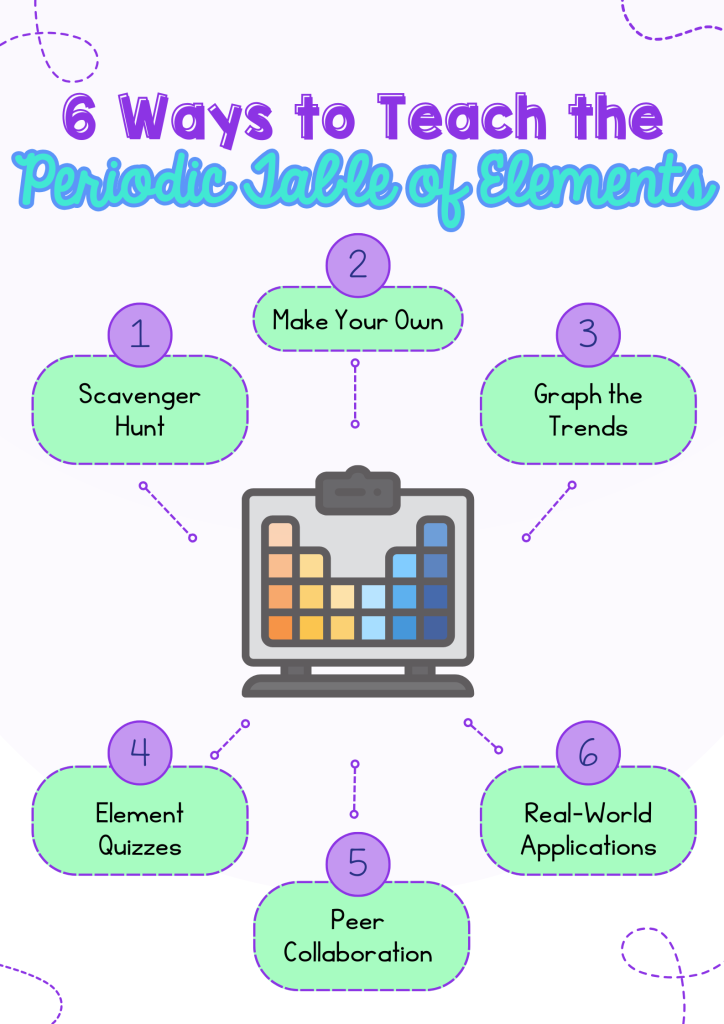
1. Periodic Table Scavenger Hunt
A scavenger hunt is an easy entry point for students to break down the information on the periodic table. This is one of those warm-up activities to get students – individually or in small groups – engaged in reading the table and identifying groups and families.
The only required knowledge from your students is identifying the different information in each box of the periodic table.
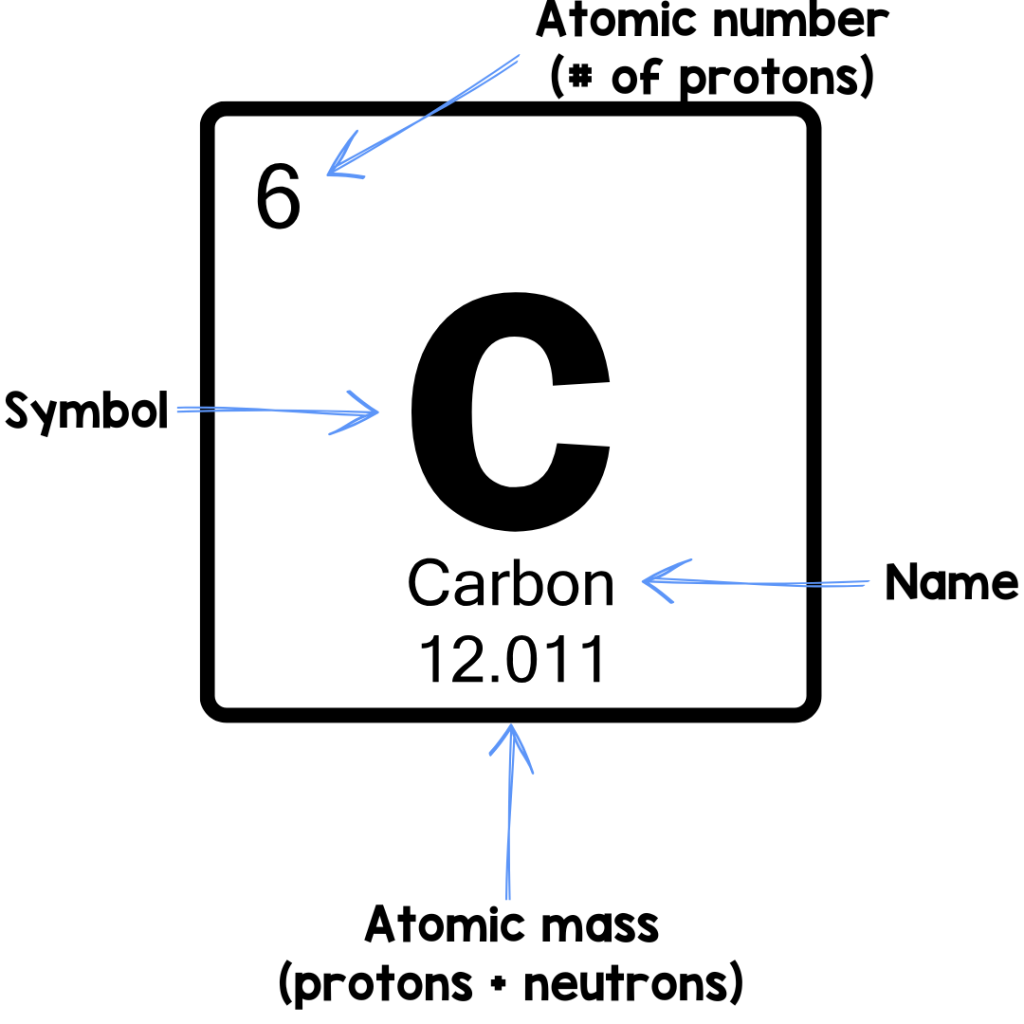
Use this FREE Periodic Table Scavenger Hunt for students to explore the periodic table to answer questions and familiarize themselves with how it is organized and the information included.
Teacher Tip:
Gamify this activity by making it a race. Maybe it’s the first group to find everything correctly gets a prize or go item by item through the activity and the first student to find it correctly (and explain how they found it!) gets a prize.
2. “Make Your Own” Periodic Table
Shift from traditional note-taking to having students create their own color-coded periodic table. This empowers students to apply their learning skills for the intake of this information. Some students benefit from writing things down, while others appreciate visualizing the different parts of the table.
You can provide students a blank or filled-in template like the ones in this resource and then have students classify elements based on their properties (e.g., metals, nonmetals, valence electrons).

3. Graphing Periodic Trends Inquiry
Another way to get students to complete more inquiry-based learning is by having them analyze periodic trends like atomic radius, ionization energy, and electronegativity by plotting graphs. This works because graphing trends makes abstract concepts visible and reinforces key patterns. I LOVE to use this as an anchoring phenomenon for the entire periodic table unit; we constantly revisit these trends and connect what we learned to explain why the trends behave the way they do.
This Graphing Periodic Trends Activity has everything you need for students to produce 12 graphs and deduce the relationships between periodic trends and the number of valence electrons. The resource includes differentiated options with four graph templates created to meet the needs of all students in your classroom!

For more about 3D Learning, check out this post, which emphasizes how such activities help students develop modeling and data analysis skills.
4. Element Names and Symbols Quizzes
I opened with an anecdote about testing students on the periodic table and how that required some added reflection about how to teach it. One of the takeaways was to practice identifying element symbols and names with structured quizzes. In this way, it’s not a matter of taking away the ‘testing’ option but instead to make it more frequent and to cover the material in smaller chunks over a few weeks.
Continuing to quiz students is important because they should be able to quickly identify the element given the symbol and vice versa. This will allow them to quickly and accurately find the element on the periodic table.
Structured quizzes about element names and symbols can be used in more than one way, too! Use each quiz as practice stations or bell-ringer activities to reinforce the element names and symbols; there’s nothing that says a quiz has to be a one-and-done assessment!
Save planning time with this set of Element Names and Symbols Quizzes. It has 5 quizzes with 10 elements each. PLUS each set of elements has multiple versions so you can mix it up and use them as quizzes, bell ringers, stations, reviews, and more!

5. Differentiated Group Work and Peer Collaboration
To support student learning, I like to use small groups and peer collaboration. This builds knowledge of the periodic table and soft skills that also benefit students’ learning.
Group students based on skill level or specific learning needs (ELL students, gifted students) to collaboratively complete periodic table activities.
Another way to leverage small group and peer work is to incorporate think-pair-share techniques or jigsaw activities.
The think-pair-share technique allows students to share knowledge in a way that is less daunting or risky. Nobody is put on the spot because they can share with an elbow partner to confirm or correct their response before sharing with a wider group.
A jigsaw activity where students have an expert group and a home group means an increase in participation and peer-to-peer teaching. The act of teaching, as we know, often means learning the material better and in more depth.
AI tools can help when working with students with disabilities and/or English language learners. ELL students can participate fully in group activities when they have access to translation tools. And AI tools can also simplify complex instructions and summarize long text for students who need reading or language accommodations.
Check out this post with two amazing AI tools for teachers to use to differentiate for their students.
6. Real-World Applications & Phenomena-Based Learning
Tying classroom learning to the “real world” beyond our classroom walls creates added connections where students can ‘see’ and understand the material being taught.
One way to do this is by including real-world uses of the elements in modern technology or medicine. This approach will spark curiosity and show the relevance of learning the periodic table and the different elements within it.
This site lets students explore the elements and what they’re actually used for in the real-world.
If you’re looking for other ideas to use as an anchoring phenomenon you NEED to check out this list of phenomena on The Wonder of Science website that aligns with the NGSS standard for the periodic table. I like to use the ones for Burning Steel wool and Limiting reactant.
For more ideas on framing units around real-world phenomena check out this post with an overview of this modern pedagogical method and this post with 7 ways to implement phenomena in your science classroom.
Conclusion
Once I started to use these different active learning strategies in my classroom when teaching the periodic table, I noticed that my students were more engaged and the learning was more meaningful. Students were moving beyond traditional note-taking and memorizing, two activities that were so familiar to me from when I was a student.
It was a challenge to switch my approach initially but slowly and steadily I found a way to incorporate these six strategies with great success. But it didn’t happen overnight! Instead, I tried one option at a time and I encourage you to do the same.
Start with the FREE Periodic Table Scavenger Hunt.
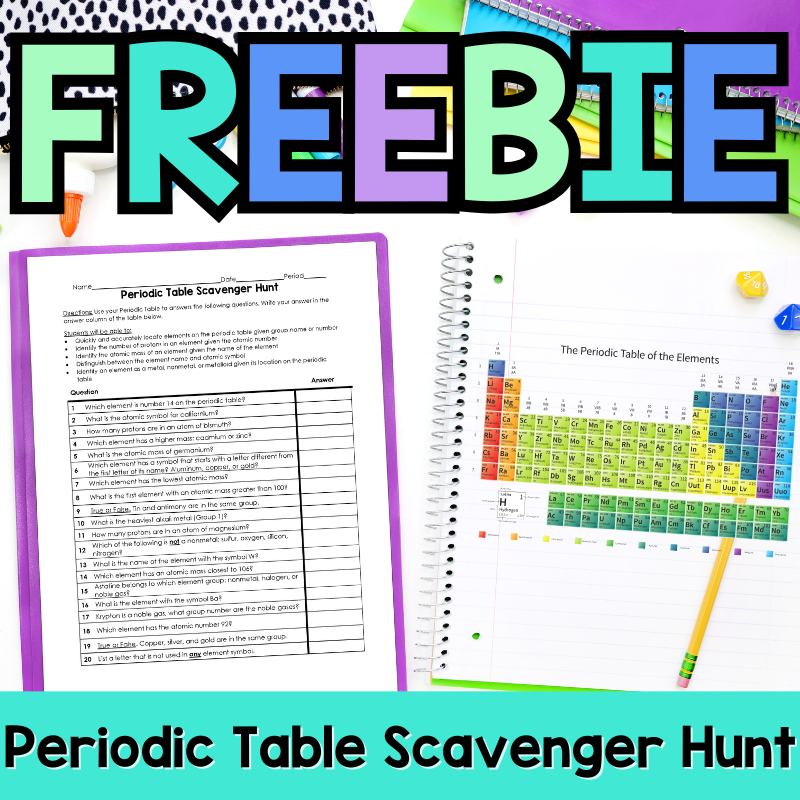
And if you want to try a few more of these options without sacrificing planning time, make sure to grab this set of Periodic Table Introduction Activities. It will simplify your lesson planning because it has ready-made, differentiated activities for print and digital use.
To round out your teaching of the periodic table, use this full Periodic Table lesson that includes a detailed PowerPoint presentation and guided notes for students to follow along with these activities.
Looking Ahead
Building on these strategies, the next post will provide ways to support ELL students in your science classroom. With different learning tools, effective uses of AI, and science-specific strategies, you’re sure to find tips and tricks to help you be in tune with your students’ needs!
Let’s Connect
💡Feel free to explore Keystone Science for ready-to-use high school chemistry, biology, ecology NGSS aligned notes and activities.
💡Subscribe to my email list for weekly tips direct to your inbox.
💡Follow me on Instagram for daily tips, motivation, and facts you can use in your classroom!
🌟Share in the comments or email me directly 👉🏻 [email protected]
